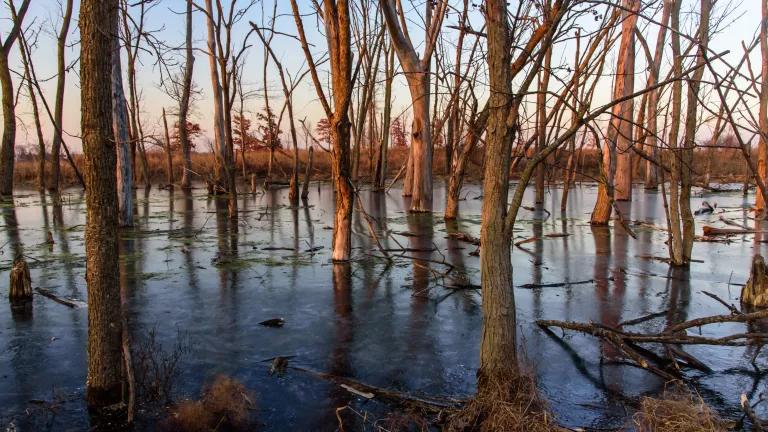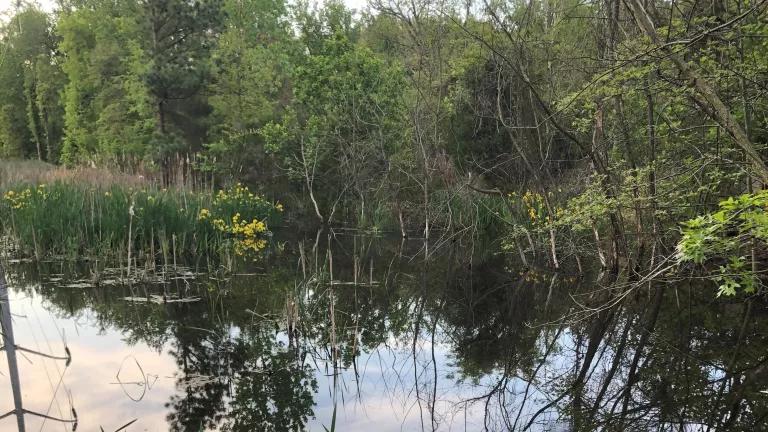
As a surfer and ocean swimmer, I travel frequently to my hometown of San Diego—especially when the surf is good. However, because I work on stormwater management professionally, I know too much to think that it’s all fun and games out in the water when it’s been raining.
Every time it rains, a toxic brew of stormwater runoff spills into San Diego’s world-class surf breaks. In some cases, the water can become so polluted that it’s unsafe to swim or surf—no matter how glassy and idyllic the waves may look.
This recent article from Surfer Magazine does a great job of exposing the extent of the problem and should be a wake-up call for San Diegans. San Diego is one of the ten largest cities in the country, with a strong economy and tax base. Tourism is lifeblood of the economy. People and businesses located in San Diego because of the beauty of its beaches should be disturbed by the city’s reluctance and inability to ensure that beaches are safe. Is it really America’s Finest City when one risks stomach flu and much worse when they go for a swim?
As I explained in a podcast earlier this year, it seems impossible to justify economically what this drought-prone city is letting happen every time it rains: Instead of capturing or reusing the rain water, which would both alleviate the stormwater problem and provide a local water source for the city, San Diego lets stormwater run down driveways, parking lots, and streets—collecting toxic pollution along the way—until the storm drains take it to the beach, where it can make people sick.
The good news is, San Diego has some options. Across the country, cities are realizing that green infrastructure solutions can be a crucial part of stormwater management and responsible water stewardship. My team at NRDC has worked with cities (including Seattle, Philadelphia, and New York) to help them realize how, in addition to necessary upgrades to major physical infrastructure, creating incentives for private property owners to capture rain water can be a cost-effective way for cities to manage their stormwater.
Smart public policies and programs provide important mechanisms to help private property owners become a part of the solution. Ideally, stormwater fees for private property owners would ensure that properties with large amounts of impervious area pay higher stormwater fees. (In San Diego, residential owners pay only approximately $0.95/month for stormwater management, whereas the national average is about $4.00/month). Unfortunately, neither the residential nor the commercial rate structures are based on how much stormwater is actually generated on a given property. Moreover, the combined revenues from San Diego's exceedingly low fees are not nearly enough to cover the true costs of San Diego’s stormwater management).
Other important policies include on-site stormwater rules for new and redevelopment, so that new construction does not add to the city’s existing stormwater burden. San Diego is on the right track here with a planned on-site stormwater rule that will require developers to capture the 85th percentile storm. The city is also contemplating an “alternative compliance” option whereby, instead of requiring developers to manage stormwater on their own site, developers can pay into a general fund to manage the equivalent amount of stormwater elsewhere. If this program is intelligently structured and manages to set high enough “alternative compliance” fees from developers, it could be a source of funds that could either go toward subsidizing voluntary green infrastructure retrofits on private land or large regional water capture and infiltration or reuse projects.
San Diego has also made a good start with its rain barrel rebate program, whereby the city offers to pays one dollar per gallon of rain barrel storage capacity for residential property owners.
Initiatives such as the rain barrel program, which encourage private property owners to manage stormwater onsite, are the right idea, but rain barrels on single family homes will not make a dent in San Diego’s stormwater problem. The existing rain barrel program should be scaled up to include not just rain barrels, but also green roofs, porous pavement, rain gardens, and bioswales. The City of San Diego should cover the cost of installation and also provide owners with a financial incentive for long-term maintenance of these distributed "green" practices.
How can the city justify spending the money to build and maintain green infrastructure on private property? Simply calculate the cost to the tourist economy each time it rains, beginning with beach closures and localized flooding. Add to that the cost of treating stormwater-related illnesses every time it rains. Surely, rather than bear that cost each year it is more rational to pay property owners, as other cities do, in order to encourage them to capture and/or re-use rainwater on their own properties. Not to mention that spending on a green infrastructure incentive program could offset some of what San Diego is going to have to spend anyway to meet the requirements in its municipal stormwater permit. The “green” solutions that manage stormwater, such as mature trees, rain gardens, onsite rainwater capture and re-use systems, and green roofs can even help reduce water consumption, reduce summer temperatures in buildings—reducing cooling costs—and improve property values. San Diego should try a private property green infrastructure grant program on at least a pilot basis.
San Diego has made laudable commitments on the energy front—to be fully reliant on renewable energy by 2030. In the face of this ambitious energy pledge, San Diegans should demand the same level of innovation, commitment, and resources on the water infrastructure front. City leaders—citizens and public officials alike—should take steps today to create policies and programs to ensure that when clean water falls from the sky in a drought-prone city it’s a reason to celebrate—not a reason to worry.



